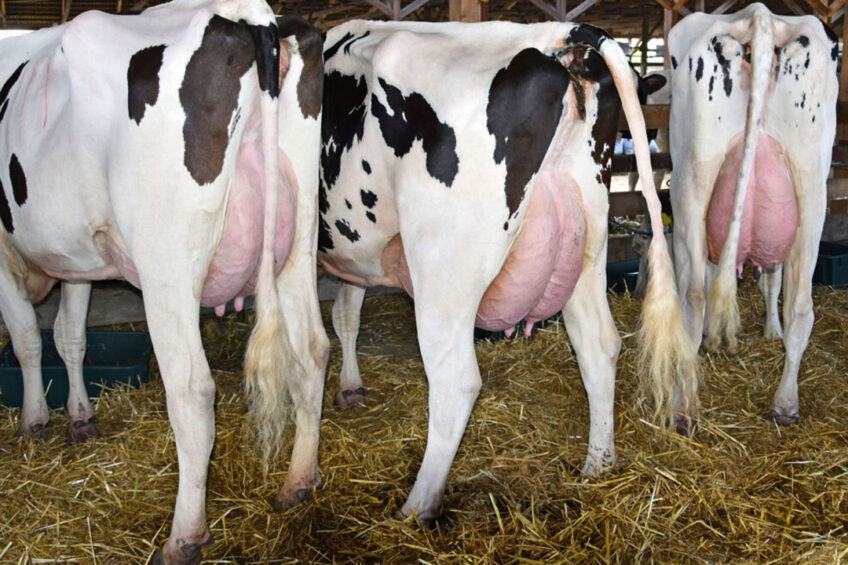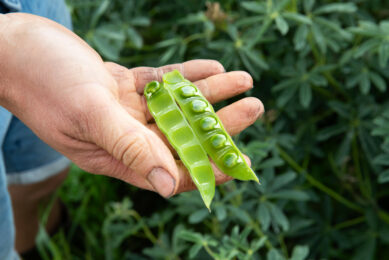Dairy cow nutrition and mastitis

Financial losses due to mastitis are mainly associated with significantly lower milk production and milk quality, additional labour, and an increase in veterinary service costs for farmers and for the dairy processors in a lower milk to cheese yield ratio. To date, mastitis, together with lameness, is considered the number one reason for dairy cow culling globally. Here we explore the role of nutrition in preventing mastitis.
In almost all cases, mastitis infection is transmitted horizontally in the herd with the spread of contagious bacteria from a cow with an infected udder to a healthy cow. Depending on bacterial species, pathogenicity and the cow’s immune system, observing and controlling mastitis cases may vary from subclinical to clinical.
In clinical cases, dairy producers observe major changes in the mammary gland and milk secretion with coliform bacteria Escherichia Coli and Klebsiella sp. often being the reason of infection. Clinical mastitis can be easily detected by the farmer since the quarter affected is usually swollen and hot to the touch.
Fore stripping each teat will help farmer confirm such cases, especially when he sees abnormal milk which may appear watery, discoloured or bloody. The problem arises in detecting sub-clinical mastitis. Many milking cows in the barn could have subclinical mastitis, meaning there is no obvious changes to milk or the gland itself for the farmer to observe, but they are infected with contagious bacteria including Staphylococcus aureus, Streptococcus agalactia and Mycoplasma bovis.
Somatic cell count (SCC)
The presence of bacteria within the mammary gland circulates white blood cells (leukocytes) to neutralises tissue from infectious pathogens and toxins. Normally the mammary gland is protected from microorganisms via macrophages (milk somatic cell count up to 200,000 cells/ml) but in cows with mastitis, neutrophils presence in the mammary gland increases which results in elevated somatic cell count in milk (SCC >200,000 cells/ml).
Somatic cell count along with several other factors to consider on a farm level including milk fat to protein ratio, age of the cow and stage of lactation, can be an index for detecting subclinical mastitis in the herd. Although SCC on a herd level may appear fine, a quarter-level per cow under mastitis is undoubtably an accurate metric of successful mastitis treatment. Higher SCC is closely associated with milk production losses.
Studies show that SCC was negatively correlated with milk production, energy corrected milk, dry matter intake and feed efficiency for milk yield. There is an economic advantage with improved feed efficiency. A cow’s immune system is very sensitive and highly related to nutrition – specific nutrient status. In most of mastitis cases, we see a specific and a non-specific response of cows’ immune system. In vaccinated animals, specific T- and B-leukocytes respond to vaccines via producing specific antibodies against specific antigens causing mastitis.
Non-specific immune response is the natural immunity of a cow, a non-antigen specific inflammatory response including phagocytic cells and lactoferrin synthesis in the udder, is an innate resistance protein involved in the prevention of mammary gland infection, especially of coliform bacteria. But among other pathogens, Staphylococcus aureus is one of the bacteria that has the mechanisms to evade immune system detection, resulting in subclinical mastitis cases.
Key nutritional boosters
Failing to meet nutrient requirements of the cow may have both a direct impact on immune function to prevent mastitis as well as increasing the cow’s susceptibility to mastitis through their direct impact on metabolic diseases. Especially for cows in transition period when gestational macro, micromineral and vitamin losses to foetus and colostrum appears to be significant.
Mastitis and metritis can follow in cases with placenta retention caused by several reasons, including dystocia, poor dry cow management, low blood concentration of hormone – PGF2, nitrates and mycotoxins presence in the feed.
From a nutrient point of view, there is a connection between feed energy to protein ratio, Ca:P:Mg imbalances and low supplementation of vitamin A and vitamin D3 together with low antioxidants mainly selenium and vitamin E. Selenium affects the innate and the adaptive immune responses of the mammary gland through humoral and cellular activities. There is a significant reduction in the incidence of mastitis in dairy cows after they were supplemented with selenium and Vitamin E. Research shows that feeding selenium-yeast supplement to cows during late gestation improves antioxidant status and immune responses after calving.
Lymphocytes activity, thus the production of antibodies, is positively influenced by energy, protein, copper, zinc, selenium and vitamins A, D3 and E . Combining vitamin A with β-carotene showed to reduce mastitis. Zinc is also a mineral to pay attention to when comes to mastitis prevention. Not all zinc minerals are the same and mainly due to their bioavailability status even when comparing several organic forms. Zinc is often found in numerous metalloenzymes having significant effect in cellular growth and reduction of somatic cell count.
Conclusion
Milk quality should be a priority for every farm! For the dairy industry itself there should also be a premium markup to ensure availability of high-quality products for consumers. Current milk component pricing system based on milk components mainly, protein – butterfat solids – should also take into account SCC in the form of premiums.
Low SCC is achieved by emphasising cleanliness of individual cows in the milking parlour, herd-stall environment, milking parlour precise cleaning procedures, prompt and adequate milk cooling right after milking – in addition the focus should also be on the nutritional and welfare status of cows.
References are available from author upon request.
Join 13,000+ subscribers
Subscribe to our newsletter to stay updated about all the need-to-know content in the dairy sector, two times a week.










